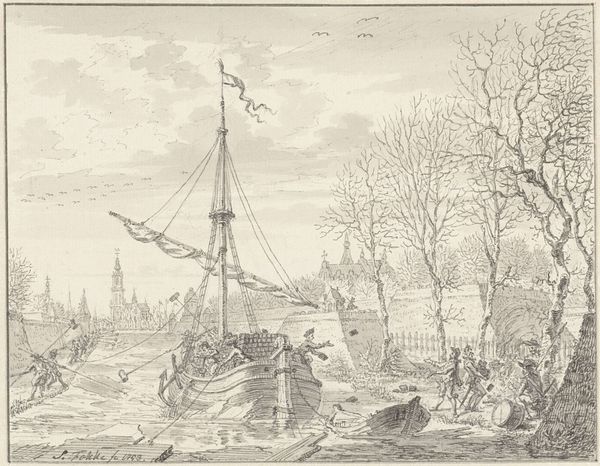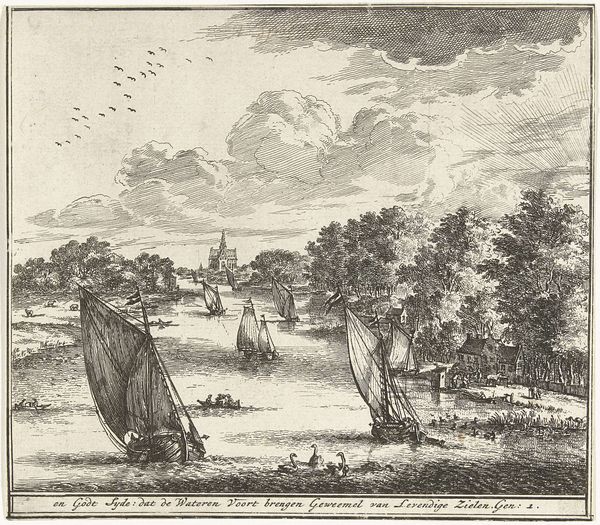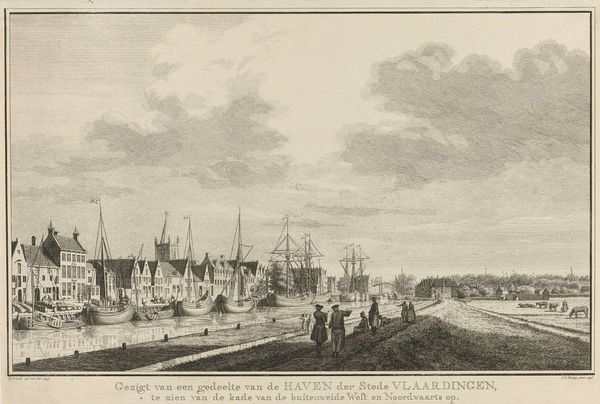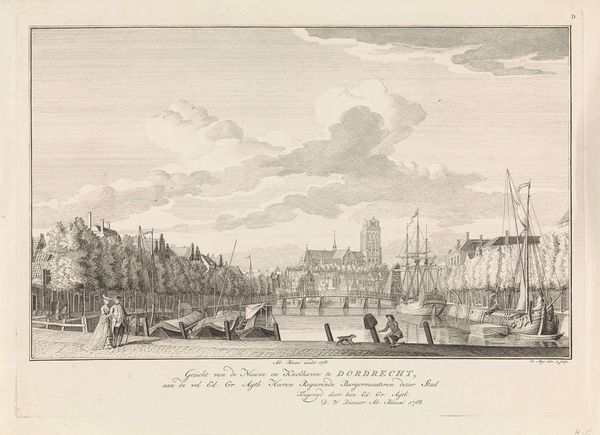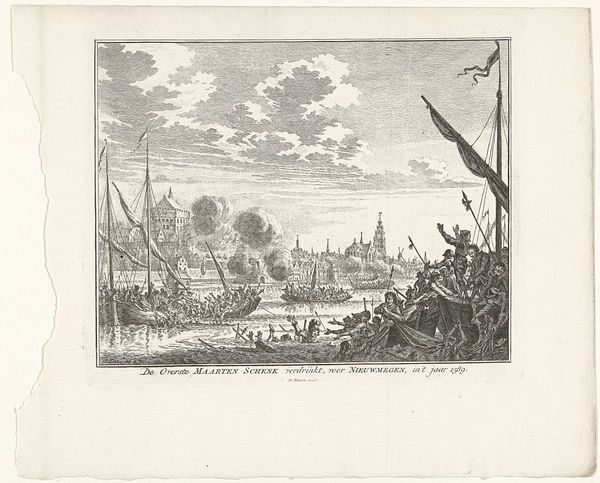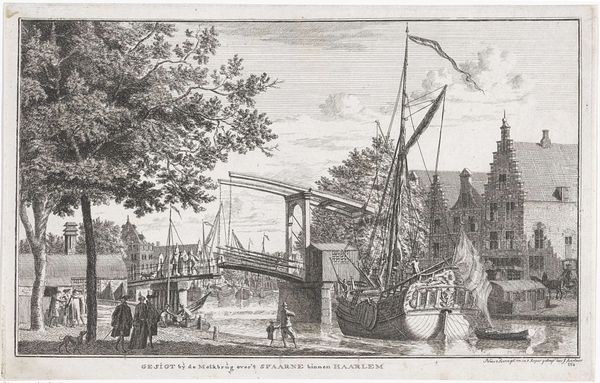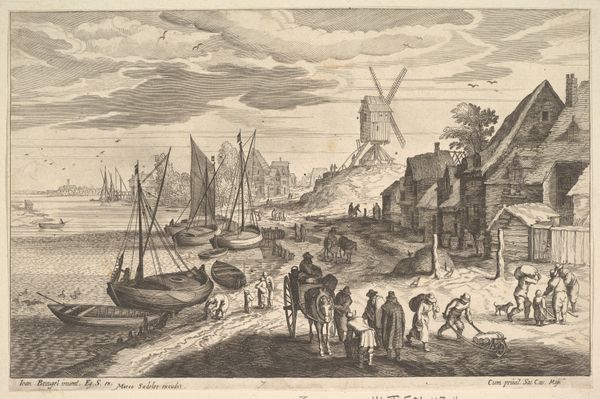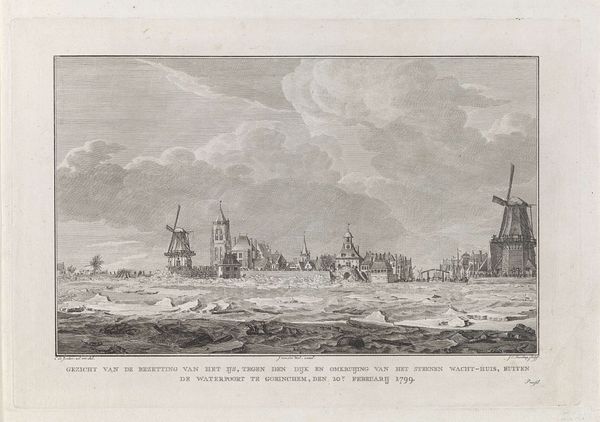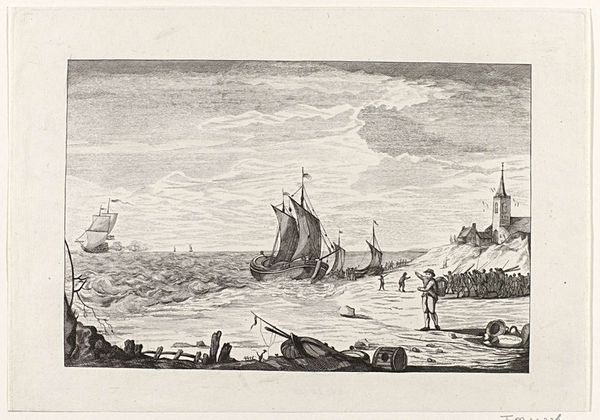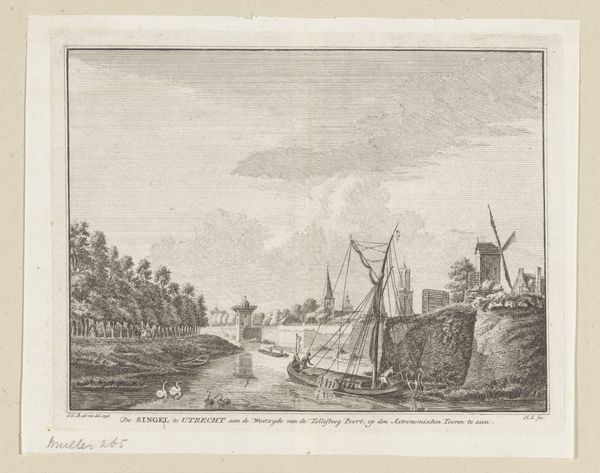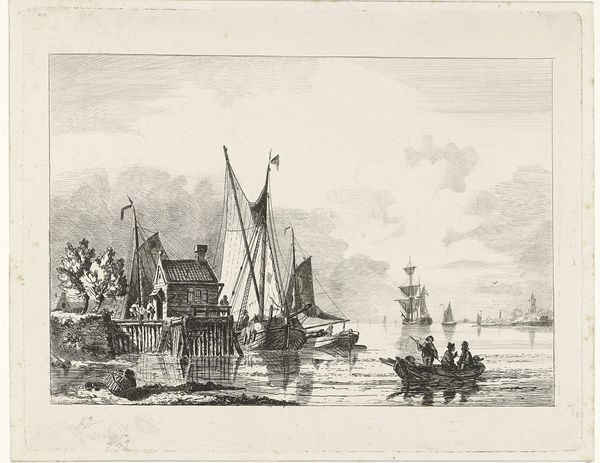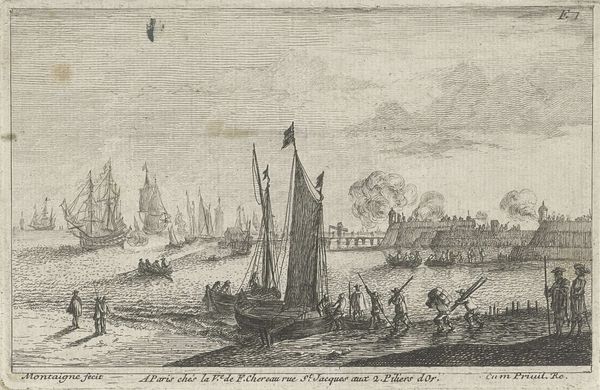
print, engraving
#
dutch-golden-age
# print
#
pen illustration
#
old engraving style
#
landscape
#
cityscape
#
history-painting
#
engraving
Dimensions: height 180 mm, width 217 mm
Copyright: Rijks Museum: Open Domain
Editor: This engraving from the late 1700s by Noach van der (II) Meer, titled "Turfschip van Breda, 1590", depicts a historical event with what appears to be a humble peat barge. I am intrigued by the detailed linework of the landscape, which reminds me of Delftware. What significance do you find in this depiction of a military victory achieved with such ordinary means? Curator: This piece provides an excellent illustration of the materialist perspective, revealing power dynamics through the lens of labor and everyday objects. The "Turfschip" wasn't just any vessel; it was integral to Breda's economy, moving fuel to homes and industries. Hiding soldiers within a common transport challenges the heroic narratives of traditional war art and draws our attention to the economic systems inherent to the conflict. The print itself, its creation, distribution - speaks volumes about art's function in shaping public memory and national identity. Consider the resources required for this print's production: paper, ink, the engraver’s labor... these elements embed this historical moment within a network of material conditions. Editor: So, you are saying that the choice of an engraving medium, traditionally used for distributing information widely, emphasizes the intent to shape a specific public perception of the event? Curator: Precisely. By using this easily reproducible medium, the artist makes the narrative of a tactical win, achieved through subterfuge with a workaday vessel, accessible to a wider audience, thus solidifying its place in the collective consciousness and celebrating a win by all estates. Is the artist’s careful detailing, as you point out, just aesthetic, or does it serve to ‘ennoble’ this humble “Turfschip” in retrospect? Editor: I see your point; it reframes victory not through battlefield prowess but through clever usage of available materials and trades. Thinking about the Dutch Republic’s mercantile strength, that totally makes sense! I had only considered the final output as "art". Now I'll be looking at the ways that an art object came to be and to what purpose! Curator: Excellent! That is how we can appreciate that art never exists in a vacuum.
Comments
No comments
Be the first to comment and join the conversation on the ultimate creative platform.
